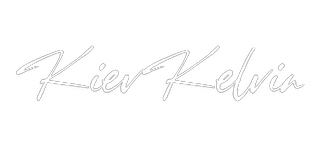Tone refers to the overall mood or emotional atmosphere that permeates a screenplay. It dictates how readers connect with the story and interpret events based on the feelings it evokes.
Like a subtle yet influential background music score in film, a script’s tone can powerfully impact how audiences receive and interact with the characters and their journeys.
In this comprehensive guide, we’ll break down the elements that make up a cinematic tone, why it is so integral to impactful screenwriting, and how to intentionally craft the perfect tonal palette to elevate your next script.
Defining Tone in Screenwriting
Tone stems from the writer’s specific word choices, scene descriptions, sequencing of events, and characters’ actions and behaviors. The combinations of these elements work together to establish an overarching atmospheric vibe.
This vibe cues your audience into how they should be receiving the story based on the emotions it’s stirring up. A dark, creepy tone indicates mystery, suspense, and danger afoot. Meanwhile, a light, wistful tone conveys warmth, nostalgia, and optimism.
Some examples of popular tonal descriptors used for calling out desired vibes upfront in scripts include:
- Dark
- Brooding
- Deadpan
- Absurdist
- Quirky
- Neo-noir
- Sentimental
While genre conventions and story content play a key role, ultimately the writer’s lens determines how the reader connects with the events unfolding and the takeaways they leave with.
Much like a color palette choice in a painting’s composition impacts the audience’s impression and interaction with the art.
Why Tone Matters in Screenwriting
-
Sets the Stage for Audiences
A script’s opening pages establish key stylistic elements that cue readers into the intended vibe ahead. Much like the opening music overture at a symphony performance. This allows audiences to be in the right headspace to receive the story.
-
Connects Readers Emotionally
The atmosphere created through word choice, actions, details, and pacing allows readers to be emotionally transported into the world and mindset of the characters. They feel what key players feel.
-
Impacts Believability
The appropriate tone aligned with the characters and story events makes their behaviors and the unfolding scenarios feel authentic. Whereas the wrong tone can make the same scenes feel off and lose audience immersion.
-
Reinforces or Undermines Themes
The intended key takeaways and impact you want readers left with need consistent tonal reinforcement. Otherwise, they may walk away with unintended interpretations.
For example – a cautionary tale about substance addiction falling prey to gratuitous drug-fueled hijinx scenes that glorify a party lifestyle rather than condemn it. Mixed messaging muddles themes.
Types of Tonal Palettes
Here are some classic cinematic tones used to describe a wide-ranging spectrum of moods and atmospheres. Consider what tones best capture the emotional essence of your screenplay vision:
- Lighthearted – playful, humorous, optimistic
- Sentimental – nostalgic, heartwarming, emotional
- Gritty – harsh, cold, bleak
- Upbeat – cheerful, inspiriting, high energy
- Unsettling – creepy, ominous, disturbing
- Deadpan – ultra-dry humor, a matter of fact
Of course, these descriptors get combined for unique tonality depending on genre. A dark comedy adds humor to offset gritty neo-noir style story elements.
Tonality Descriptors Based On Readers’ Emotional Experience
Esteemed script consultant Dara Marks developed a spectrum system for identifying tone based on emotional effect rather than just vague genre atmospherics. She splits them into the following:
Emotional Tones:
- Sad
- Angry
- Scary
- Violent
- Erotic
Intellectual Tones:
- Mysterious – cryptic clues reveal bigger picture
- Thought-provoking – challenges assumptions
- Instructive – conveys lesson, deeper meaning
Joyful Tones:
- Humorous – comedy infused
- Inspiring – hopeful, enriched perspective
- Whimsical – playful, imaginative
Some tone descriptors based on this effect spectrum include:
- Haunting
- Disturbing
- Philosophical
- Contemplative
- Bittersweet
Why Consistent Tonal Alignment Matters
Allowing some tonal shifts is often key in taking audiences on an emotional arc. Generally keeping descriptive atmospherics, character behaviors, and sequences of events aligned in their vibe creates a cohesive immersive experience.
However, radical tonal shifts within a contained story unit or scene can give readers emotional whiplash. Which in turn causes them to disengage from characters and lose interest.
For example – starting a scene with two friends chuckling while carefreely reminiscing over fond memories. Only to suddenly pivot into one friend violently attacking the other in anger over the buried betrayal.
Not only do radical tone shifts like this feel jarring. They undermine audience connectivity developed in earlier acts. Associated emotional whiplash damages resonance and believability.
Strategies For Intentional Tonal Harmony
-
Clarify Genre and Audience Expectations
Ask what preconceived tonal anticipations will readers have? Lean into fulfilling genre conventions around key emotional elements ― or intentionally subverting them when strategically savvy.
-
Connect Tone With Character Arcs
Align descriptors with protagonists perspectives, attitudes, emotional states and transformations writers want audiences invested in.
-
Reflect on Target Emotions and Themes
What should readers walk away feeling and thinking about based on the story impact intended? Use tone strategically to reinforce perspectives.
-
Pull Inspiration From Aesthetic Concept Art
Many screenwriters use cinematic imagery captures associated with the story vibe to help translate emotional essences into written form. These visuals can inform tone choices through color palettes, character wardrobes, production designs, and lighting.
-
Map Tonal Turning Points in Story Beats
Look at plot points causing shifts in the protagonist’s journey and evolving worldview. What new descriptive choices and atmospherics enhance these character developments?
How to Sustain Tonal Consistency Within Scenes
Tone alignment within self-contained scenes ensures audiences stay hooked into the unfolding on-page action without distraction. Here are some key elements to analyze when assessing consistency:
Word Choice and Dialogue:
Do slang terms, regional vernacular or vocabulary contradict or align with the intended vibe based on characters and relationship contexts? Does dialog remain in sync emotionally from start to finish in a scene exchange?
Character Actions and Behaviors:
Do expressed mannerisms, reactions, and behaviors shift unexpectedly or unrelateably within a scene sequence? Or do they sustain reader alignment?
Imagery in Descriptions:
Do sensory or expressive details like metaphors, colors, sounds, and textures of objects sharply alter or confuse the established vibe?
Pacing and Balance:
If a scene starts slower-paced, does the momentum sharply accelerate at some point to detrimentally throw off readers rhythmically?
Pay attention if descriptive passages or character interactions drastically shift readers’ emotional experience anywhere within a complete scene.
Whether that’s starting upbeat and ending depressing. Or moving from funny to terrifying with no recalibration room to process for audiences.
Real-World Tonal Dissonance Examples
Here is an excerpt from Diablo Cody’s beloved indie comedy-drama Juno – which takes a sudden dark turn when the topic pivots to abortion:
Juno MacGuff: I already know what everyone is gonna say anyway. That I should…[trails off]
Leah: …shave it?
Juno MacGuff: No. That I should, um, you know. Nip it. [Leah suddenly stops smiling]
This crass euphemism for abortion after playful teen banter creates temporary dissonance. Until cathartic crying conveys legit emotional conflict and tough decision stakes ahead for an unprepared pregnant protagonist.
However, a similarly abrupt tonal U-turn by a peripheral character might read as contrived or feel unearned without context. Disrupting the delicate line between poignant and preachy that the core tone walks effectively.
Why Tonal Mastery Matters for Screenwriters
Without thoughtful tonal consideration woven through script choices ― events risk either falling flat for lack of emotional stakes resonance or coming off unbelievable. While blatantly disjointed shifts can tank audience connectivity arcs in their tracks.
By intentionally aligning atmospheric descriptors, actions, details, and dialogue within scenes and sequence progressions―writers cue immersive engagement. They subtly dictate emotional interpretation while reinforcing narrative themes over 90 to 120 cinematic pages.
In closing, evaluate if your script hits these key marks of impactful tonality:
✓ Establishes distinct, relatable mood upfront aligning with genre
✓ Sustains audience perspective and character investment
✓ Builds atmospheric intensity strategically without betrayal
✓ Resolves or evolves initial tone satisfyingly
✓ Leaves readers musing over intended themes
Much like a skillfully coordinated orchestra leading listeners through melodic movements priming their reactions before sticking to the final crescendo.
If your script checks all those boxes, then you’ve effectively composed an engaging tone that resonates.
Frequently Asked Questions
How do you describe tone in screenwriting?
Tone in screenwriting refers to the overall emotional atmosphere and mood that permeates a script. It’s created through deliberate choices with language, scene descriptions, character behaviors, and plot events that cue audiences into the intended vibe.
What exactly is a tone in writing?
Tone in writing refers to the attitudes, feelings, and vibes that readers experience based on how the narrative elements like word choice, pacing, imagery, and details make them feel as they progress through the story. It establishes an emotional lens.
What does tone mean in film?
Tone in film refers to the atmospheric vibe and audience impressions created by elements like music, editing, color palettes, and pacing in combination with the script and acting performances. This interplay shapes the feelings viewers walk away with.
What’s the difference between tone and theme?
Theme refers to the central ideas, messages, lessons, or social commentary a writer wants to convey about society, human nature, or philosophies. Tone describes the mood and emotions evoked by the storytelling style and events to immerse audiences so they resonate with those themes.
How do you tell an author’s tone?
Some ways to identify an author’s tone are paying attention to the language and word choice, assessing if sentences seem objective or biased, noticing positive or negative emotional language, analyzing what descriptive details focus on, listening for sarcasm or humor, and recognizing what the events highlight about people.
How do authors portray tone?
Authors portray tone through deliberate stylistic choices with vocabulary, organization of details and plot events, sensory descriptions, characters’ behaviors and attitudes, the role of humor or solemnity, and even structural pacing decisions that elicit specific emotions in readers to cue the desired overall atmosphere.
How do you describe tone examples?
Some tone examples descriptors are: optimistic, irreverent, nostalgic, cautionary, gritty, quirky, melancholy, inspirational, ominous, wistful, scathing and more based on the attitudes and feelings different writing techniques evoke in audiences.
What are the 3 types of tones?
The three common types of tones used in literature and film are:
- Emotional tones – sad, scary, angry
- Intellectual tones – philosophical, contemplative
- Joyful tones – humorous, whimsical, inspiring
What is an example of a serious tone in writing?
A serious tone in writing conveys weightiness through elements like stark imagery, references to mortality, somber or disturbed character behaviors, and subject matter associated with heavier themes like war, illness, or social injustices. The event sequencing impacts audiences through poignancy instead of lightheartedness.

